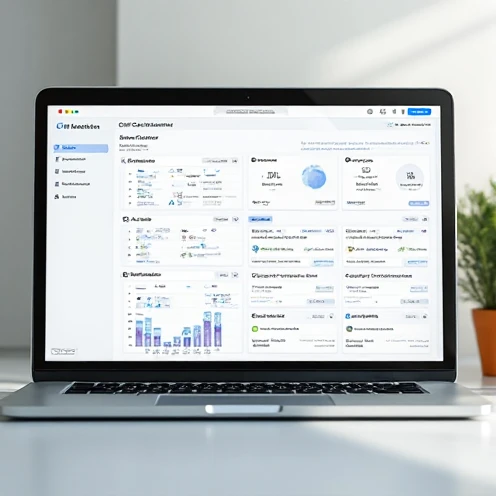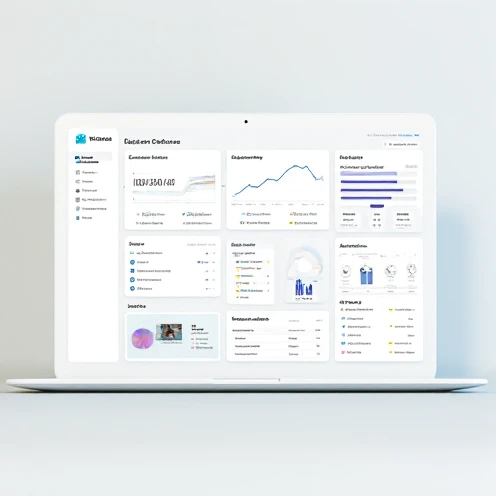In the modern business landscape, competition is fierce, and customer loyalty is harder to earn than ever before. This is where a Customer Relations Program becomes a game-changer. It is not only about managing data but also about creating a structured system to enhance customer experience, drive sales, and build long-term loyalty.
When businesses embrace a Customer Relations Program, they create a powerful bridge between customer expectations and brand performance. This tool helps companies track interactions, anticipate customer needs, and deliver solutions with precision. As a result, companies build stronger trust and create a pathway for consistent growth.
Iklan Google AdSense
Understanding the Core of CRM
At its essence, a Customer Relations Program is an advanced form of Customer Relationship Management (CRM). It provides an integrated approach where businesses can store customer details, monitor engagement, and streamline communication. This helps organizations to deliver personalized service at every touchpoint.
Moreover, the program allows companies to transform raw customer data into actionable insights. Businesses can easily identify buying patterns, predict preferences, and optimize marketing campaigns with higher accuracy. This data-driven approach ensures that decisions are backed by facts, not guesswork.
Why Businesses Need a Strong
Customers expect more than just products or services; they want memorable experiences. A well-implemented Customer Relations Program helps companies meet and exceed these expectations. It ensures that customer interactions are consistent, personalized, and efficient.
Additionally, businesses can gain a competitive edge by fostering loyalty and reducing churn rates. Loyal customers not only buy more but also become brand advocates, spreading positive word-of-mouth and attracting new customers.
Benefits of Implementing a Customer Relations
One of the greatest advantages of a Customer Relations Program is efficiency. By centralizing data, teams can work smarter and avoid duplication of efforts. Every department, from sales to customer service, has access to the same customer history, ensuring seamless collaboration.
Another benefit is improved decision-making. With accurate reports and real-time analytics, leaders can identify market trends and adjust strategies accordingly. This proactive approach helps organizations stay ahead in dynamic markets.
Key Features of an Effective Customer Relations
An efficient Customer Relations is more than just a database. It usually includes automation tools, customer tracking systems, and analytics dashboards. These features save time and enhance accuracy in customer management.
Integration with other tools is also vital. For instance, linking the program with social media platforms, email marketing systems, or e-commerce websites creates a holistic ecosystem. This ensures businesses can manage every customer touchpoint from one platform.
How Customer Relations Program Enhances Customer Experience
Customer satisfaction is the heartbeat of business success. With a Customer Relations, companies can personalize messages, send timely follow-ups, and offer tailored promotions. This level of attention makes customers feel valued and understood.
Beyond personalization, the program allows faster response times. Automated workflows and ticketing systems ensure no customer query goes unanswered. Quick, efficient service builds trust and keeps customers coming back.
Best Practices for Maximizing Customer Relations Program
To unlock its full potential, companies must use their Customer Relations, strategically. First, ensure the data being collected is accurate and regularly updated. Clean data is essential for generating reliable insights.
Second, invest in staff training. A powerful system is only as good as the people using it. Teams must understand how to leverage features effectively to achieve measurable results.
Overcoming Challenges
Despite its advantages, businesses may face challenges during implementation. Common issues include resistance to change, lack of proper training, or difficulties integrating with existing tools. Addressing these challenges early ensures smooth adoption.
Another challenge is maintaining data privacy. Businesses must comply with regulations like GDPR while handling sensitive customer data. This not only avoids legal issues but also builds customer confidence in the brand.
The Future of Customer Relations Program
Technology continues to evolve, and so will Customer Relations Programs. With the rise of artificial intelligence and machine learning, CRM systems will become even smarter. They will predict customer behavior, automate repetitive tasks, and provide deeper insights.
Furthermore, the future will focus on omnichannel engagement. Businesses will connect with customers across multiple platforms—social media, chatbots, emails, and mobile apps—delivering a seamless experience at every step.
Real-Life Examples of Customer Relations Program Success
Many global brands have achieved remarkable growth using a Customer Relations Program. For instance, e-commerce giants use these systems to recommend products based on customer browsing history. This personalized approach significantly boosts sales.
Small businesses also benefit greatly. A local café, for example, can use a Customer Relations Program to track customer visits and send loyalty rewards. This simple yet effective method strengthens customer retention and drives repeat business.
Why You Should Invest in a Customer Relations Program
Investing in a Customer Relations Program is no longer optional—it is essential. It provides businesses with the tools to understand, engage, and retain customers effectively. By fostering loyalty and delivering personalized experiences, companies can build stronger relationships that stand the test of time.
Ultimately, a Customer Relations Program is not just software—it is a growth strategy. With the right implementation, businesses can transform customer interactions into opportunities for long-term success.
Iklan Google AdSense


